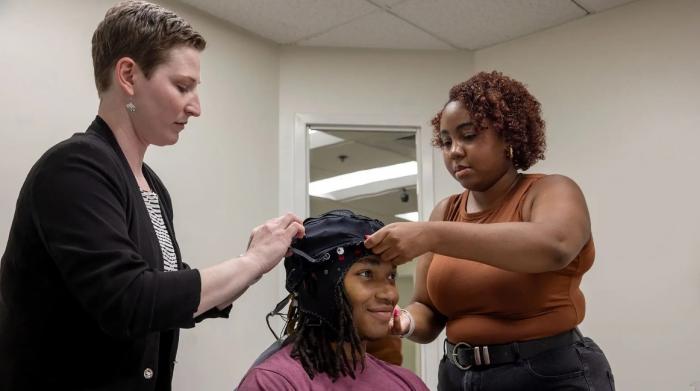Hair, Hair for Equity in Neuroscience Research
Psychology Undergrad Expands African Americans’ Participation in Studies by Styling Hair So They Can Wear Sensor-Using Caps
Rachel Romeo, a University of Maryland assistant professor of education, wants to shine a light on kids’ early development—literally. Using a technique called Functional Near-Infrared Spectroscopy (fNIRS), she beams light into the brain from sensors on a stretchy black cap, pinpointing blood flow to measure brain activity.
But in summer 2022, she realized she would have a hard time including a swath of the population in her study, because that light can’t easily penetrate Afro-textured hair, which is dark and densely curled. Yet her focus is on socioeconomic disparities in learning and development; she had to find a way to work with kids from all backgrounds.
“Most of the time in neuroscience research, if you can't get a good signal from a participant, you just exclude them or you throw that data away,” said Romeo, who directs the Language, Experience, and Development (LEAD) Lab. “This contributes to underrepresentation.”
More than 70% of research participants in the U.S. are white, and as a white woman, Romeo didn’t know where to turn to learn how to change that dynamic. So she put out an ad for a lab assistant to help braid Black hair—and serendipitously, Abria Simmons ’25 had just declared a human development minor and enrolled in one of Romeo’s classes. She wasn’t a professional, but learned from generations of women in her family and was eager to help increase Black representation in neuroscience.
Read more of Karen Shih's article in Maryland Today. The photo of Assistant Professor Rachel Romeo and Abria Simmons '25 placing a fNIRS neuroimaging cap on volunteer Cole Parker is by Stephanie S. Cordle.
Published on Thu, Nov 9, 2023 - 9:40AM




